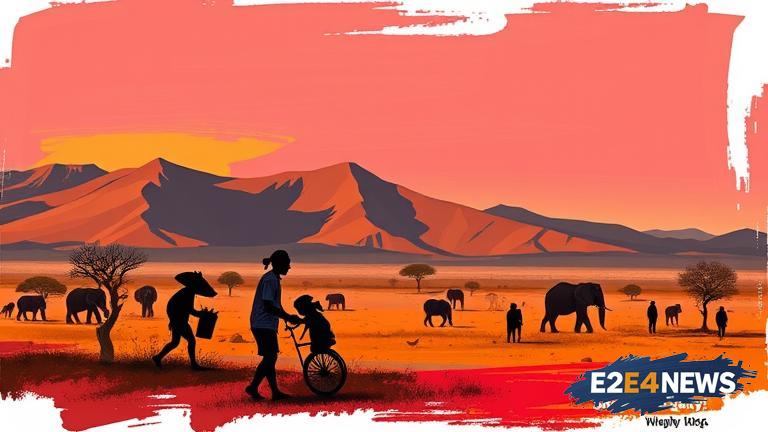The Namibian creative industry has experienced significant growth in recent years, with a surge in demand for local art, design, and innovation. This trend has created a plethora of opportunities for local creatives to showcase their talents and contribute to the country’s economic development. From visual arts to music, fashion, and film, Namibian creatives are making waves both locally and internationally. The government has also taken notice of the industry’s potential, with initiatives aimed at supporting and promoting local creatives. One such initiative is the establishment of the Namibia Film Commission, which provides funding and resources for local filmmakers to produce high-quality content. Additionally, the Namibia Tourism Board has launched a campaign to promote local art and culture, highlighting the country’s unique heritage and creative expression. Local businesses are also getting in on the action, with many companies incorporating Namibian art and design into their branding and marketing strategies. This not only helps to promote local talent but also contributes to the country’s economic growth. Furthermore, the rise of social media has provided a platform for local creatives to showcase their work and connect with a global audience. Many Namibian artists and designers have gained international recognition, with their work being featured in exhibitions and publications around the world. The country’s capital, Windhoek, has also become a hub for creative activity, with numerous galleries, studios, and coworking spaces popping up around the city. The University of Namibia has also introduced courses in creative fields such as graphic design, fine art, and music, providing students with the skills and knowledge needed to succeed in the industry. Moreover, the Namibian government has implemented policies aimed at protecting intellectual property rights, ensuring that local creatives are able to profit from their work. The country’s creative industry has also become a significant contributor to the national economy, with many local businesses relying on creative services such as branding, advertising, and design. In addition, the industry has also created jobs and stimulated entrepreneurship, with many young Namibians starting their own creative businesses. The Namibian creative industry has also become a source of national pride, with many locals celebrating the country’s unique cultural heritage and creative expression. The industry has also attracted international attention, with many foreign investors and tourists drawn to the country’s vibrant arts and culture scene. However, despite the many opportunities available, the industry still faces challenges such as limited funding, lack of infrastructure, and limited access to markets. To address these challenges, the government and private sector have launched initiatives aimed at providing support and resources for local creatives. These initiatives include training programs, mentorship schemes, and funding opportunities, all aimed at helping local creatives to succeed in the industry. In conclusion, the Namibian creative industry is a thriving and vibrant sector, with numerous opportunities for local artists, designers, and innovators to showcase their talents and contribute to the country’s economic growth. With the right support and resources, the industry is poised to continue growing and developing, providing a platform for local creatives to succeed and make a meaningful contribution to the country’s development.
